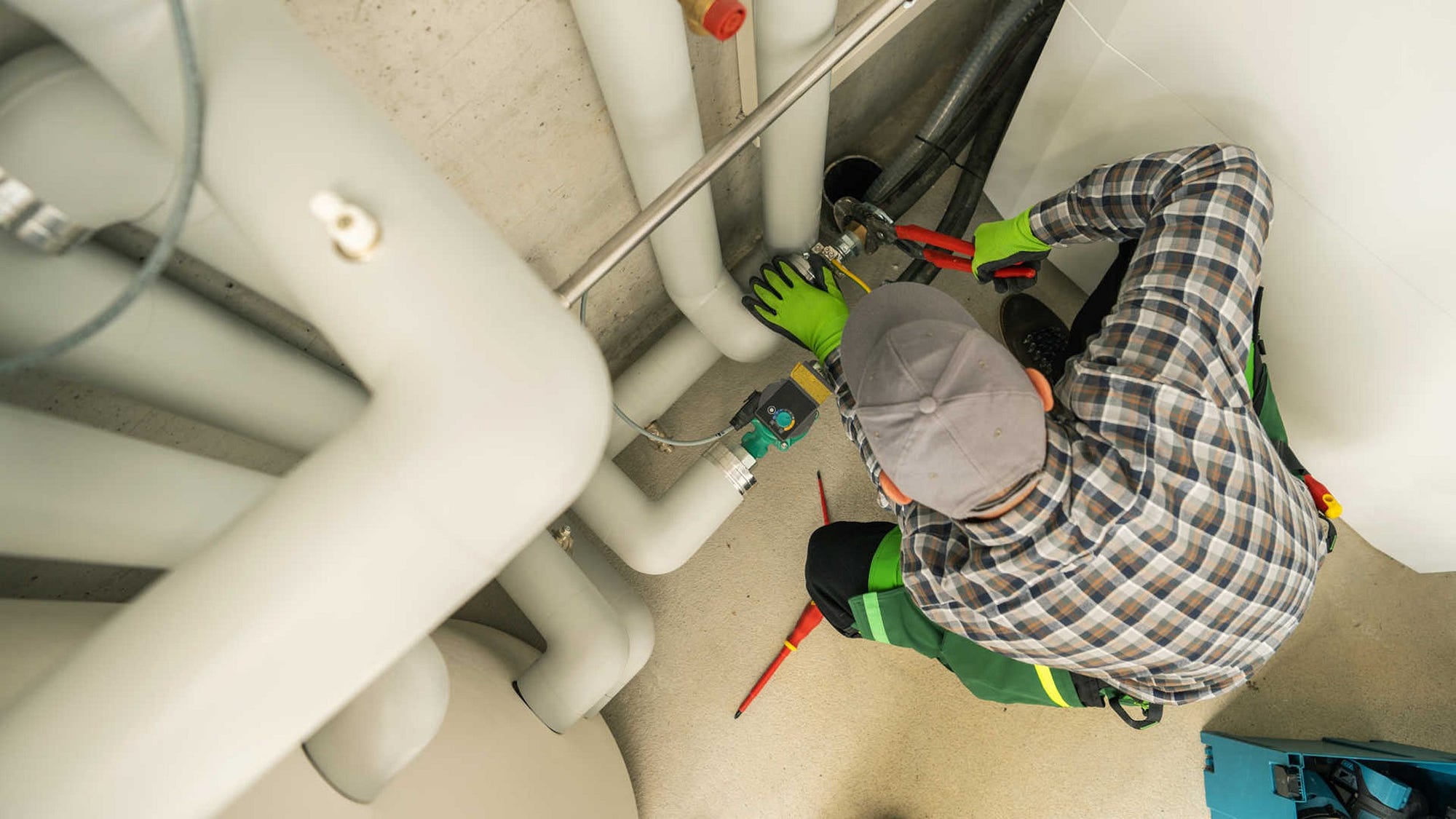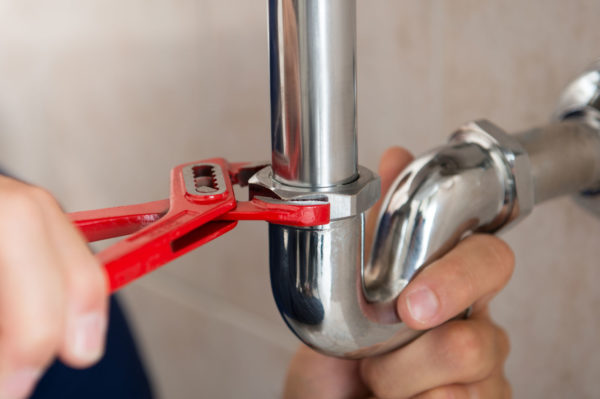Unpacking the Basics of Home Plumbing: A Beginner's Manual
Unpacking the Basics of Home Plumbing: A Beginner's Manual
Blog Article
Any individual is bound to have their own unique piece of advice involving Plumbing basics: How your home plumbing works.

Plumbing is a crucial element of any kind of home, in charge of supplying tidy water for drinking, cooking, and showering, as well as eliminating wastewater securely. Understanding the fundamentals of home plumbing is crucial for every house owner to ensure proper maintenance, troubleshooting, and, if essential, repairs. In this novice's overview, we'll cover the basic principles of home plumbing to aid you become much more familiar with exactly how it works.
Water Heater
The water furnace is responsible for heating water for domestic use, including bathing, cooking, and cleaning. Common kinds of hot water heater consist of tank-type hot water heater, tankless (on-demand) water heaters, and heat pump water heaters. The hot water heater is connected to the water system system and supplies warm water to plumbing components as required.
Drain System
The drainage system removes wastewater from your home and carries it away to a sewage treatment facility or septic system. It consists of a network of pipelines, installations, and components that carry wastewater from plumbing fixtures to the main sewer line or septic tank. Proper water drainage is vital to prevent obstructions, back-ups, and sewage leaks.
Air flow System
The air flow system assists preserve appropriate air pressure and prevent sewer gases from entering your home. Air vent pipes, also called air vent stacks, extend from plumbing components to the roofing, enabling sewer gases to escape securely outside. Air flow pipelines also permit air to go into the drain system, helping with smooth wastewater circulation and stopping suction or vacuum cleaner impacts.
Supply Of Water System
The water supply system brings tidy water into your home from a municipal water resource or a private well. It contains a primary water line that attaches to your home's plumbing system, usually situated underground. A water meter gauges the amount of water eaten, while a shut-off valve permits you to regulate the flow of water right into your home.
Plumbing Fixtures
Plumbing components are devices that supply water to numerous parts of your home and consist of sinks, faucets, commodes, showers, tubs, and devices such as dishwashing machines and cleaning makers. Each fixture is linked to the water supply system by means of pipes and fittings and might have its shut-off valve for upkeep or emergencies.
Usual Plumbing Tools
Having the right tools accessible is vital for performing fundamental plumbing repairs and maintenance jobs. Usual plumbing tools consist of flexible wrenches, pipe wrenches, pliers, pipeline cutters, hacksaws, bettors, augers (or drain snakes), and Teflon tape. Having these tools conveniently offered can assist you deal with small plumbing issues successfully.
Fundamental Plumbing Repair Work
While some plumbing repairs may need expert support, several common problems can be addressed with basic DIY methods. Knowing just how to fix a dripping faucet, unblock a drain, replace a bathroom flapper, or repair a leaking showerhead can save you money and time on plumbing repair services.
Verdict
Comprehending the fundamentals of home plumbing is necessary for every single homeowner to preserve a safe, functional, and effective plumbing system. By acquainting on your own with the water supply system, plumbing fixtures, water drainage system, ventilation system, typical plumbing devices, and fundamental repair work, you can with confidence address small plumbing problems and guarantee your home's plumbing system operates smoothly.
Plumbing for Beginners: A Comprehensive Guide
If you’re a beginner when it comes to plumbing, don’t worry; you’re not alone. Plumbing may seem intimidating, but with the right knowledge and a little practice, you can handle many common plumbing issues on your own. In this comprehensive guide, we will demystify the world of plumbing for beginners, providing you with the basic knowledge and skills needed to tackle common plumbing problems and even take on some DIY plumbing projects.
The Importance of Basic Plumbing Knowledge for Beginners:
First and foremost, basic plumbing knowledge gives you a solid foundation. It helps you grasp the key concepts and terminology that are essential in this field. By learning the basics, you’ll be able to build upon that knowledge and tackle more complex plumbing tasks in the future.
Having a basic understanding of plumbing also enables you to handle common issues that may arise in your home. Picture this: a leaky faucet or a clogged drain. With some basic plumbing knowledge, you’ll have the confidence to troubleshoot and fix these problems on your own. It saves you from unnecessary expenses and the hassle of waiting for a professional to arrive.
As a beginner, learning the basics of plumbing empowers you to take care of your own home. It gives you a sense of independence and self-reliance. You’ll no longer have to rely solely on professionals for every small issue that pops up. Instead, you can handle many tasks yourself, saving time and money in the process.
Remember, everyone starts as a beginner. Embrace the learning process and take small steps to expand your plumbing knowledge. There are plenty of online resources, tutorials, and even local workshops that talk about plumbing for beginners.
Essential Tools for Plumbing for Beginners
As you start your plumbing journey, having the right tools in your toolbox is crucial. Let’s explore some of the must-have tools:
Adjustable Wrench:
This versatile tool is a staple in any plumber’s toolbox. It allows you to tighten or loosen nuts and bolts of various sizes. Make sure to have an adjustable wrench with a comfortable grip.
Pipe Wrench:
A pipe wrench is specifically designed for gripping and turning pipes. It has serrated jaws that provide a strong grip, making it easier to loosen or tighten threaded pipes and fittings.
Plunger:
The plunger is a simple yet effective tool for clearing clogged drains and toilets. It creates suction when you push and pull, helping to dislodge blockages. Keep a good-quality plunger handy for those unexpected clogs.
Pipe Cutter:
When it comes to cutting pipes, a pipe cutter is your go-to tool. It creates clean, precise cuts without damaging the pipe. Look for a pipe cutter that can handle the pipe sizes you’re working with.
Hacksaw:
A hacksaw is useful for cutting through pipes, screws, and other materials. It’s a versatile tool that can handle different cutting tasks. Remember to use a blade suitable for cutting metal.
Tape Measure:
Accurate measurements are crucial in plumbing. A tape measure allows you to measure pipe lengths, distances, and dimensions accurately. Opt for a sturdy tape measure that extends a good length.
Pliers:
Pliers come in handy for various tasks, such as gripping, bending, and cutting. Slip-joint pliers with adjustable jaws are great for gripping pipes, nuts, and bolts.

I'm certainly very occupied with and I am hoping you enjoyed the entire blog post. In case you liked our post if you please remember to share it. Thanks so much for your time invested reading it.
Quote Report this page